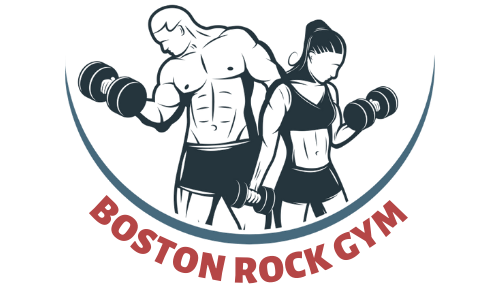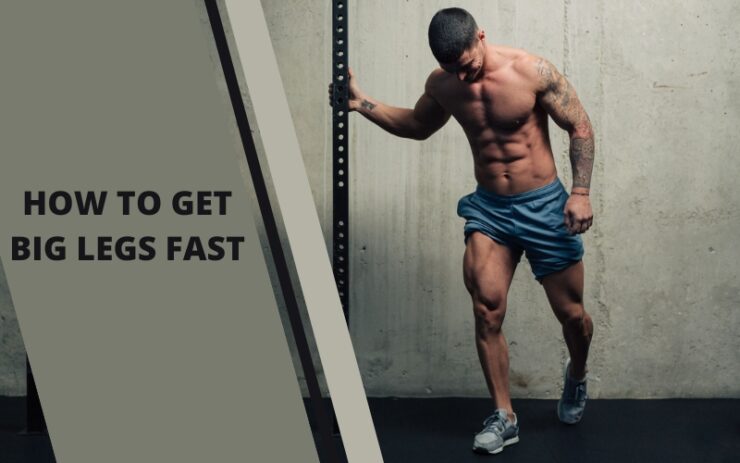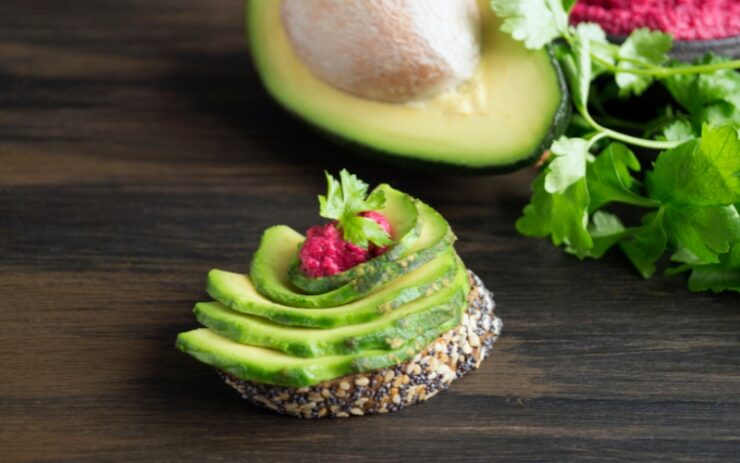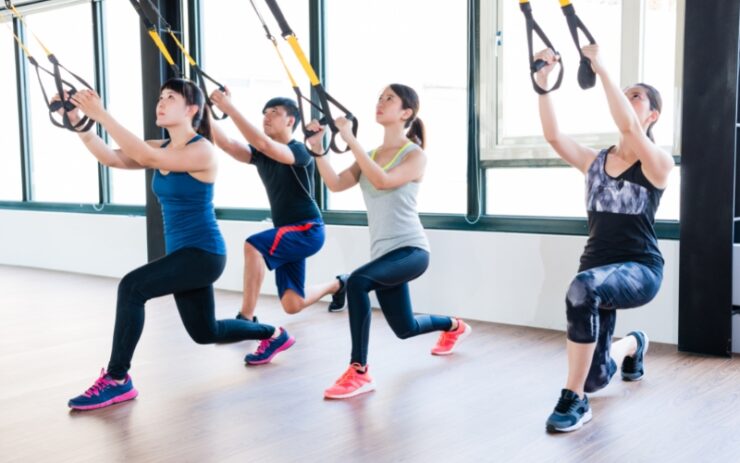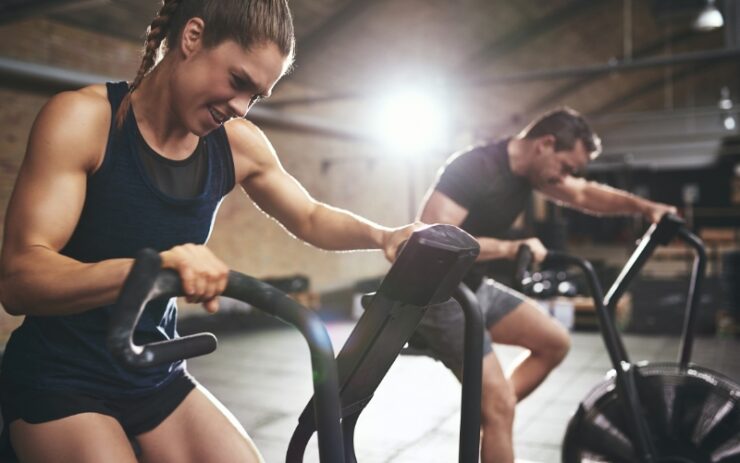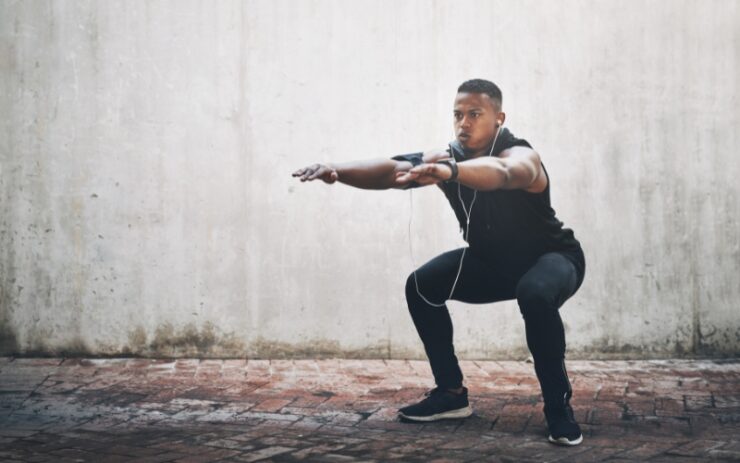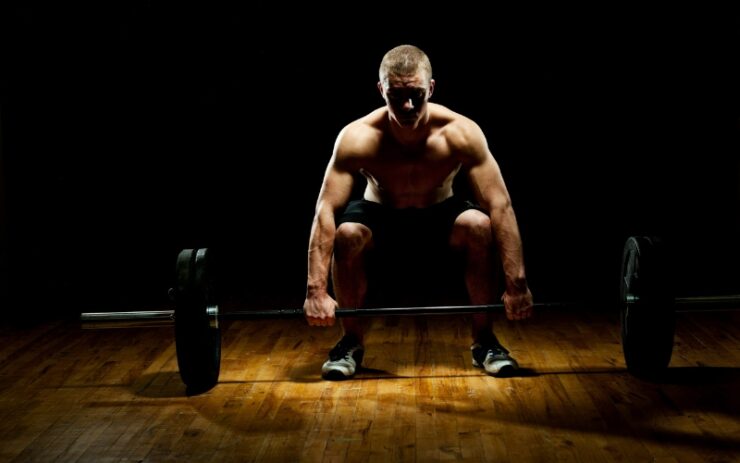It takes much more than merely working out a couple of days a week and adding a few squats to leg day to develop big, thick legs. To entirely alter the composition of your legs, you must work hard, be committed, and take a systematic approach to your exercise and diet.
Although this may sound scary, it truly doesn’t have to be. Once it becomes a part of your routine, you won’t struggle to complete your exercises and follow a proper diet at all.
But, the key is knowing exactly what to do and how to do it. That’s why we provide you with the 5 essential tips on how to get big legs fast that will work like a charm! Take a look at the list below for all the details.
Contents
Top 5 Tips on Getting Big Legs Fast
1. Maintain a Proper Diet
In order to grow, you must eat. There is no doubt that resistance exercise is necessary for muscular building. However, your body has to be in a positive protein balance in order to create and restore muscle tissue, which means you need to consume more protein than your body uses up during the process.
You won’t grow muscle mass from exercise if you don’t consume adequate protein. Additionally, your body needs other macronutrients in addition to protein to refuel and repair.
To promote muscular growth and gains, your body needs fuel from high-quality proteins, healthy fats, and complex carbs. Reduce your consumption of processed snacks, sugary drinks, baked goods, fatty meats high in saturated fats, and full-fat dairy items.
Incorporating lean meals into your diet is also healthy. Examples include fish, chicken breasts, and pork cutlets. You should consume these meals to meet your nutritional protein needs and to develop muscle.
A diet rich in fiber is advised particularly if you want to lose weight. Fiber will make you feel satisfied and keep you from eating until your next meal even if it has no nutrition.
2. Perform the Right Exercises
Knowing what exercises to perform for big legs is essential since you don’t want to target the wrong muscle groups. You’ll need a mix of resistance training, cardio, squats, and deadlifts if you want big, muscular thighs.
Resistance Training
Through a process known as muscular hypertrophy, resistance training, more commonly known as lifting weights, will increase the size of your muscles. The body’s capacity to adjust to its surroundings is astounding.
Lifting weights causes your muscles to experience repetitive stress and damage, which alerts your body that it needs to develop more muscle and strength to support larger loads, greater volume, and higher intensity during workouts in order to defend itself from more stress.
A physical stress-induced increase in the size of individual muscle cells and overall muscle mass is referred to as muscular hypertrophy. Resistance training and progressive loading (increasing the weight lifted over time) are frequently used to induce hypertrophy, which increases overall muscle mass and yields greater results.
Cardio
Cardio is crucial as well, particularly if you want to alter the composition of your legs. Cardio can be done in a variety of ways, including steady-state cardio on machines like the elliptical or Stairmaster, high-intensity interval training (HIIT), or an hour-long cycling session.
The greatest and quickest way to develop strong, thick thighs is to lift weights at least two to three times a week while hitting your legs. On days when you don’t do any leg exercises, concentrate on your upper body, your core, and accessory motions with glute bands to promote muscle activation and develop larger butts and thighs.
Squats
Squats help to improve your back, glutes, legs, and core. They can boost flexibility, posture, and balance as well as muscular mass. Researchers discovered in one study that squatting can increase muscle mass, enhance body composition, and strengthen knee extensors, which can enhance jump ability.
The best way to perform a squat is with your torso mostly maintaining straight and not sloping forward or back. You maintain your feet approximately hip-distance apart and bend both knees to gently drop down as if you were ready to sit in a chair. Both feet should remain under pressure.
Deadlifts
Compound exercises like deadlifts train your complete body, including your shoulders, core, arms, and legs. Standard deadlifts are comparable to squats in that you push your hips back while bending at the waist to raise a barbell or several dumbbells off the ground. In a 2020 research, it was discovered that improvements in lower-body maximum strength and jumping ability were equivalent for the squat and the deadlift.
To do a deadlift correctly, you must exert some effort since you want to activate your legs rather than stress or strain your back muscles. You may alter deadlifts in the same way that you can vary squats, however, squat variants may offer greater variety for your exercises.
Despite all of its advantages, the majority of individuals shouldn’t rely solely on squats and deadlifts if they want strong and big legs. It is comparable to arm training. You’ll need to isolate your arms in exercises other than chin-ups, rows, and bench press variants if you desire larger arms.
Don’t be afraid to perform bodybuilding exercises like leg presses, leg curls, hack squats, and similar activities. Many powerlifters are even aware of how important it is to incorporate these exercises into their routines in order to increase their strength and overcome challenges with their squats and deadlifts.
Additionally, it’s crucial to not ignore single-leg exercise. This helps with balance, suppleness, and coordination as well as knee stability, all of which are important for supporting your major primary movements.
3. Take Supplements
Supplements, together with your exercise and diet plan, can assist and optimize muscle growth. Let’s start with protein as an example. For maximum muscle protein synthesis and efficient muscle growth, you need at least 1 g of protein per lb of body weight.
You may achieve your macronutrient targets, enhance recovery, and promote muscle growth with the use of supplements like whey protein isolate or plant protein powder to develop those thick thighs.
In order to increase your muscle growth, it’s also a practical approach to consume a fast-absorbing kind of protein right before and after your workout. You won’t be able to develop the desired thighs without protein. That is why it’s important for you to maintain a protein-rich diet as well.
4. Stay Hydrated
Make sure you’re drinking enough water if you want to develop larger, thicker thighs. Your body will benefit from proper water consumption by converting proteins more quickly and by controlling your energy and weight. Your resting energy expenditure has been proven to increase by up to 30% when you routinely drink water throughout the day.
Generally speaking, you should consume around 34 ounces of water every day. In one study, a group of women was instructed to drink 34 ounces of water each day for a period of 12 months without making any other lifestyle modifications, which led to a 4.4-pound weight reduction. Your body’s composition will change as a result of drinking more water, giving you larger thighs.
5. Know Your Body
Your body type, or more precisely, your genetics, will play a major role in determining your overall plan for getting bigger thighs. Ectomorphs, endomorphs, and mesomorphs are three distinct classifications used to classify body forms.
Due to their metabolism, ectomorphs have trouble accumulating either body fat or muscular mass and are considered to be hard gainers. Endomorphs are effortless gainers who can put on muscle mass and body fat with little to no effort.
The difficulty with endomorphs is that, despite having the largest muscular mass, they have a difficult time reducing weight.
Of all body types, mesomorphs are the most genetically blessed. Mesomorphs can easily gain or lose weight due to their naturally athletic build and lower propensity to accumulate body fat.
Your training background and starting point also play a significant role in determining how soon you may develop huge thighs
. It will be simpler for you than someone who has never lifted weights or is unfamiliar with resistance training if you have been exercising for a while and want to move your attention to developing stronger quadriceps.
Conclusion
Concentrate on your exercise routine, diet, and supplements. If you can combine strength training with cardio, eat raw whole foods with lean proteins and complex carbs, and complement your diet with essential supplements, you’ll be able to get big legs in no time.
However, you need to remain focused and make sure you’re putting in the work. Remember, practice makes perfect, so don’t get disheartened if you don’t manage to do a certain exercise right away or your diet doesn’t become perfectly balanced instantly. Take your time and be patient—the results will come!
